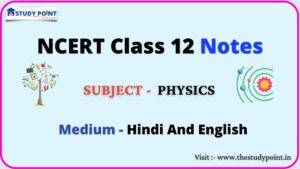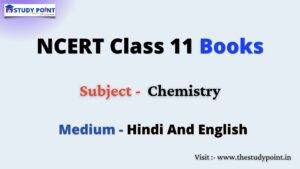Here we are providing Class 9 Science Objective Chapter – 1 Matter in Our Surrounding because its very important for Class 9 students as we all know that every board exam question has MCQs so that students should practice these questions so that students can get good marks in board. Class 9 Science Objective Chapter – 1 Matter in Our Surrounding is an extremely important and its also a year in which students learn the fundamentals of concepts that help them lay a solid foundation for their higher education. Here we are providing in Class Class 9 Science Objective Chapter – 1 Matter in Our Surrounding 100+ questions so that students practice more and more. If you want class wise Notes Then Click Here
Class 9 Science Objective Chapter – 1 Matter in Our Surrounding
1.Which of the following phenomena would increase on raising the temperature?
( A ) Diffusion, evaporation, compression of gases
( B ) Evaporation, compression of gases, solubility
( C ) Evaporation, diffusion, expansion of gases
( D ) Evaporation, solubility, diffusion, compression of gases
Ans – ( C )
2. The amount of heat energy require to change 1 Kg of solid into liquid at its melting point is called
( A ) Kinetic energy
( B ) Condensation
( C ) Latent heat
( D ) direct heat
Ans – ( C )
3.The mass per unit volume of a substance is:
( A ) acceleration
( B ) density
( C ) velocity
( D ) weight
Ans – ( B )
4.Seema visited a Natural Gas Compressing unit and found that the gas can be liquefied under specific conditions of temperature and pressure. While sharing her experience with friends she got confused. Help her to identify the correct set of conditions.
( A ) Low temperature, low pressure
( B ) High temperature, low pressure
( C ) Low temperature, high pressure
( D ) High temperature, high pressure
Ans – ( C )
5. On which of the following factors evaporation depends?
( A ) Surface area exposed to atmosphere
( B ) temperature
( C ) humidity and wind speed
( D ) all of the above.
Ans – ( D )
6.The melting point of ice is:
( A ) 273.16 K
( B ) 723.16 K
( C ) 263.16 K
( D ) 373 K
Ans – ( A )
7.The property of flow is unique to fluids. Which one of the following statements is correct?
( A ) Only gases behave like fluids
( B ) Gases and solids behave like fluids
( C ) Gases and liquids behave like fluids
( D ) Only liquids are fluids
Ans – ( C )
8. The process in which change of state from liquid to vapour takes place without the liquid reaching the boiling point is called
( A ) Sublimation
( B ) Condensation
( C ) Evaporation
( D ) Melting point
Ans – ( C )
9.What is dry ice?
( A ) Solid carbon dioxide
( B ) Nitrogen oxide
( C ) Carbon mono oxide
( D ) None of them
Ans – ( A )
10.During summer, water kept in an earthen pot becomes cool because of the phenomenon of
( A ) diffusion
( B ) transpiration
( C ) osmosis
( D ) evaporation
Ans – ( D )
11.Which of the following state is responsible for the glow in the sun and stars?
( A ) Solid
( B ) Liquid
( C ) Plasma
( D ) Gas
Ans – ( C )
12.A few substances are arranged in the increasing order of ‘forces of attraction’ between their particles. Which one of the following represents a correct arrangement?
( A ) Water, air, wind
( B ) Air, sugar, oil
( C ) Oxygen, water, sugar
( D ) Salt, juice, air
Ans – ( C )
13.Which of the following phenomenon takes place when we add a drop of Dettol into the water?
( A ) osmosis
( B ) diffusion
( C ) sublimation
( D ) none of them
Ans – ( B )
14.On converting 25°C, 38°C and 66°C to Kevlin scale, the correct sequence of temperature will be
( A ) 298 K, 311 K and 339 K
( B ) 298 K, 300 K and 338 K
( C ) 273 K, 278 K and 543 K
( D ) 298 K, 310 K and 338 K
Ans – ( A )
15. Every matter has its own……………… and…………..
( A ) Mass, volume
( B ) Weight, mass
( C ) Brittleness, tough
( D ) Shape, shadow
Ans – ( A )
16.Choose the correct statement from the following:
( A ) Conversion of solid into vapour without passing through the liquid state is called vapourisation.
( B ) Conversion of vapour into solid without passing through the liquid state is called sublimation.
( C ) Conversion of vapour into solid without passing through the liquid state is called freezing.
( D ) Conversion of solid into liquid is called sublimation.
Ans – ( B )
17.The boiling points of diethyl ether, acetone and n-butyl alcohol are 35°C, 56°C and 118°C respectively. Which one of the following correctly represents their boiling points in Kelvin scale?
( A ) 306 K, 329 K and 391 K
( B ) 308 K, 329 K and 392 K
( C ) 308 K, 329 K and 391 K
( D ) 329 K, 392 K and 308 K
Ans – ( C )
18. ‘Panch Tatva’ of life.
( A ) Air, god, water, mother, father
( B ) Air, fire, earth, sky, water
( C ) Air, god, water, soil, crop
( D ) Air, god, water, yield, money
Ans – ( B )
19.Which condition out of the following will increase the evaporation of water?
( A ) Increase in temperature of water
( B ) Decrease in temperature of water
( C ) Less exposed surface area of water
( D ) Adding common salt to water
Ans – ( A )
20. Which of the following is the states of matter?
( A ) Solid
( B ) Liquid
( C ) Gas
( D ) all of the above.
Ans – ( D )
21.In which of the following conditions, the distance between the molecules of hydrogen gas would increase?
(i) Increasing pressure on hydrogen contained in a closed container
(ii) Some hydrogen gas leaking out of the container
(iii) Increasing the volume of the container of hydrogen gas
(iv) Adding more hydrogen gas to the container without increasing the volume of the container
( A ) (i) and (iii)
( B ) (i) and (iv)
( C ) (ii) and (iii)
( D ) (ii) and (iv)
Ans – ( C )
22. SI unit of temperature is
( A ) Celsius
( B ) Kelvin
( C ) Fahrenheit
( D ) none of the above.
Ans – ( B )
23. Approximate value of kelvin in 0°C is
( A ) 273 K
( B ) 373 K
( C ) 290 K
( D ) 300 K
Ans – ( A )
24.The boiling point of water at sea level is
( A ) 0°C
( B ) 273 K
( C ) 373 K
( D ) 273°C
Ans – ( C )
25. SI unit of pressure is
( A ) Newton
( B ) Pascal
( C ) Watt
( D ) Second
Ans – ( B )
26.Which of the following has the strongest interparticle forces at room temperature?
( A ) Oxygen
( B ) Water
( C ) Bromine
( D ) Iron
Ans – ( D )
27. Which of the following relation is true regarding unit of pressure?
( A ) 1 atmosphere = 1.01×105Pa
( B ) 1 atmosphere = 2.01×105Pa
( C ) 1 atmosphere = 3.01×105Pa
( D ) 1 atmosphere = 4.01×105Pa
Ans – ( A )
28.Which of the following conditions is most favourable for converting a gas into a liquid?
( A ) High pressure, low temperature
( B ) Low pressure, low temperature
( C ) Low pressure, high temperature
( D ) High pressure, high temperature
Ans – ( A )
29. Boiling point of water is
( A ) 0°C
( B ) 100°C
( C ) 25°C
( D ) 37°C
Ans – ( C )
30.Dry ice is
( A ) water in solid state
( B ) water in gaseous state
( C ) CO2 in liquid state
( D ) CO2 in solid state
Ans – ( D )
31. Which of the following is the process in which solid state is directly changed to gaseous state without going through liquid state?
( A ) Evaporation
( B ) Sublimation
( C ) Boiling point
( D ) Condensation
Ans – ( B )


